Copper: First Metal Used By Ancient Man More Than 10,000 Years Ago
A. Sutherland - AncientPages.com - Copper was used by several ancient civilizations for a number of reasons. It was the first metal ever used by ancient man, dating back more than 10,000 years.
Ancient Egyptians considered copper to be a sacred metal and they believed it gave magical powers to those who wore it.
There is disagreement among archaeologists about the exact date and location of the first utilization of copper by humans.
The Imdugud Relief. Copper alloy relief on bitumen of lion-headed eagle Imdugud gripping the haunches of two stags. Image credit: British Museum
The Sumerians and Chaldeans of Mesopotamia developed considerable skill in fabricating copper and from these centers, the rudiments of craftsmanship spread to the river-dwelling people of Egypt, where it continued to flourish for thousands of years long after their own civilization had degenerated.
Copper comes from the Latin word cuprum, meaning “from the island of Cyprus,” but it is not on this island that we find the most ancient evidence of the use of copper.
The oldest copper artifact ever discovered was unearthed in Tel Tsaf, an archaeological site in Israel located near the Jordan River and Israel's border with Jordan. The area was a village from about 5100 B.C. to 4600 B.C.
A copper awl was discovered at the archaeological site Tel Tsaf in the Jordan Valley of Israel, dating to 5100 B.C. to 4600 B.C. Credit: PLOS ONE, doi: 10.1371/journal.pone.0096882
The cone-shaped copper awl was found in the grave of a woman who was about 40 years old when she died, and who had a belt around her waist made of 1,668 ostrich-egg shell beads.
This ancient copper object provides evidence that metals were exchanged across hundreds of miles in this region more than 6,000 years ago, centuries earlier than previously thought.
Ancient copper plate.
Around 8,000 and 5,000 B.C. the knowledge and use of copper were spread in the regions known now as Turkey, Iran, Iraq, and toward the end of that period we also find traces of copper used on the Indian subcontinent. Archaeologists have also found evidence of mining and annealing of the abundant native copper in the Upper Peninsula of Michigan in the United States dating back to 5,000 B.C.
The Egyptians mined copper from Sinai and used it mostly to produce agricultural tools. Of course, the ancient Egyptians were also rather vain and famously fond of personal beautification. Therefore they manufactured mirrors and razors out of copper and produced green and blue makeup from malachite and azurite, two copper compounds with brilliant green and blue colors.
The ancient Qijia Culture that mysterious disappeared also produced some of the earliest copper mirrors.
Sumerians on the other hand were masters of sculpture and they created some of the most beautiful ancient copper artifacts. As one example, we can mention the magnificent Imdugud Relief which represents a lion-headed eagle holding two stags by their tails.
In time, ancient civilizations understood copper could be used for other means than producing artifacts. The medical use of copper has origins in prehistoric civilizations.
Ancient Egyptians started using copper to sterilize water and wounds around 2,400 B.C, and, by 1,500 B.C., they also used the mineral on burns and itching, and to ease the pain of headaches. In ancient India, copper was used for medical equipment including surgical instruments.
The creation of copper coins came as the next development. Around 3,200 B.C, ancient Egyptian began to utilize copper to create balances and weights used in trade and religious ceremonies. The Assyrians followed up on this idea and used lion weights marked with the names of kings. In ancient China, weights were also made in the shape of animals.
Copper played also a vital role in ancient rituals, ceremonies, and spiritual beliefs. Hathor, the ancient Egyptian goddess of the sky, music, dance, and art, was also the patron of Sinai, the major copper mining region of the Egyptians. She was often referred to as “Lady of Malachite.” In South America, people of the Andes produced a variety of religious items from pounded copper foil and gilded copper.
In many pre-colonial sub-Saharan cultures as well, coppersmiths were believed to have powers as shamans, magicians, and priests because of their intimate knowledge of earth, minerals, and fire and their ability to produce metal from ore. In some parts of the continent coppersmithing was an inherited position with master smiths passing secret knowledge on to their sons. Mining, smelting, and casting of copper ore were preceded by elaborate ceremonies to ensure that the endeavors were safe and fruitful.
So, the history of copper goes far back in time.
Written by – A. Sutherland - AncientPages.com Senior Staff Writer
Copyright © AncientPages.com All rights reserved. This material may not be published, broadcast, rewritten or redistributed in whole or part without the express written permission of AncientPages.com
Expand for referencesMore From Ancient Pages
-
 Is A Small Obsidian Artifact Linked To Expedition Searching For A Fabled City Of Gold 470 Years Ago?
Archaeology | Mar 1, 2024
Is A Small Obsidian Artifact Linked To Expedition Searching For A Fabled City Of Gold 470 Years Ago?
Archaeology | Mar 1, 2024 -
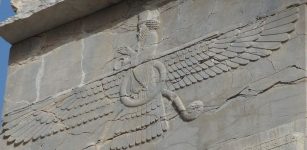 Winged Sun Disk: One Of The Oldest And Most Important Solar And Religious Symbols
Ancient Symbols | Mar 15, 2019
Winged Sun Disk: One Of The Oldest And Most Important Solar And Religious Symbols
Ancient Symbols | Mar 15, 2019 -
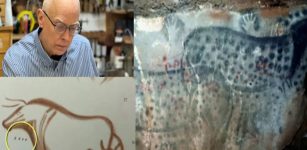 Cryptic Ice Age Markings In European Caves Deciphered – Proto-Writing Discovered By Amateur Archaeologist
Archaeology | Jan 5, 2023
Cryptic Ice Age Markings In European Caves Deciphered – Proto-Writing Discovered By Amateur Archaeologist
Archaeology | Jan 5, 2023 -
 Lothal – ‘City of Dead’ – One Of The Most Prominent Ancient Places In Danger To Be Forgotten
Featured Stories | Jun 10, 2015
Lothal – ‘City of Dead’ – One Of The Most Prominent Ancient Places In Danger To Be Forgotten
Featured Stories | Jun 10, 2015 -
 What Was On The Menu For Stonehenge’s Builders, 2500 BC? Milk, Yoghurt And Cheese Only Eaten In Exclusive Ceremonies
Archaeology | Oct 14, 2015
What Was On The Menu For Stonehenge’s Builders, 2500 BC? Milk, Yoghurt And Cheese Only Eaten In Exclusive Ceremonies
Archaeology | Oct 14, 2015 -
 The Mysterious Books Of Prophecies Of The Knights Templar – Where Are They Hidden?
Featured Stories | Mar 26, 2022
The Mysterious Books Of Prophecies Of The Knights Templar – Where Are They Hidden?
Featured Stories | Mar 26, 2022 -
 4000-Year-Old Egyptian Leather Manuscript Forgotten For More Than 70 Years – Found
News | Sep 14, 2015
4000-Year-Old Egyptian Leather Manuscript Forgotten For More Than 70 Years – Found
News | Sep 14, 2015 -
 Surprising Evidence Prehistoric People In Survived In The Coldest Regions Of Spain
Archaeology | Oct 6, 2023
Surprising Evidence Prehistoric People In Survived In The Coldest Regions Of Spain
Archaeology | Oct 6, 2023 -
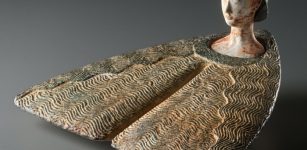 Strange Flat Idol Sculpture From Bactria Remains Unexplained
Artifacts | Sep 26, 2019
Strange Flat Idol Sculpture From Bactria Remains Unexplained
Artifacts | Sep 26, 2019 -
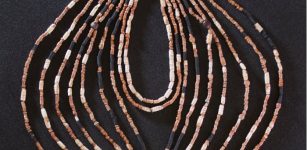 Beautiful Neolithic Ornate Necklace With Over 2,500 Stones Found In A Child’s Grave
Archaeology | Aug 2, 2023
Beautiful Neolithic Ornate Necklace With Over 2,500 Stones Found In A Child’s Grave
Archaeology | Aug 2, 2023 -
 Why Was Pharaoh Khafre Almost Wiped Out From Historical Records?
Featured Stories | Feb 19, 2020
Why Was Pharaoh Khafre Almost Wiped Out From Historical Records?
Featured Stories | Feb 19, 2020 -
 Secret Tunnel Leads To Christian Chapel In Ancient Suomela Monastery In Turkey
Archaeology | Dec 27, 2017
Secret Tunnel Leads To Christian Chapel In Ancient Suomela Monastery In Turkey
Archaeology | Dec 27, 2017 -
 Why Were Swords So Important To Ancient Vikings?
Ancient History Facts | Oct 4, 2017
Why Were Swords So Important To Ancient Vikings?
Ancient History Facts | Oct 4, 2017 -
 On This Day In History: The Battle Of Actium – Birth Of The Roman Empire – Sep 2, 31 BC
News | Sep 2, 2015
On This Day In History: The Battle Of Actium – Birth Of The Roman Empire – Sep 2, 31 BC
News | Sep 2, 2015 -
 Ancient Inventions Of Firefighting Vehicles
Ancient History Facts | Feb 16, 2016
Ancient Inventions Of Firefighting Vehicles
Ancient History Facts | Feb 16, 2016 -
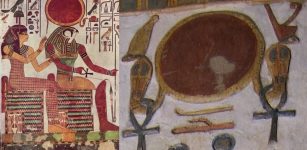 Eye Of Ra – Powerful Ancient Egyptian Symbol With Deep Meaning
Ancient Symbols | Jan 23, 2019
Eye Of Ra – Powerful Ancient Egyptian Symbol With Deep Meaning
Ancient Symbols | Jan 23, 2019 -
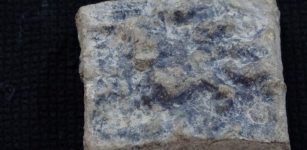 2,300-Year-Old Roman Lead Weight In Assos Is The Largest Ever Discovered
Archaeology | Aug 15, 2023
2,300-Year-Old Roman Lead Weight In Assos Is The Largest Ever Discovered
Archaeology | Aug 15, 2023 -
 Aurignacians: Sophisticated And Mysterious Culture That Arrived To Levant 40,000 Years Ago – New Study
Archaeology | Nov 10, 2019
Aurignacians: Sophisticated And Mysterious Culture That Arrived To Levant 40,000 Years Ago – New Study
Archaeology | Nov 10, 2019 -
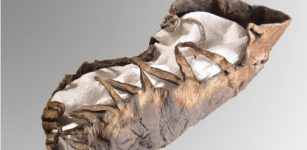 Extremely Well Preserved 2,000-Year-Old Child Shoe Discovered In Salt Mine
Archaeology | Sep 5, 2023
Extremely Well Preserved 2,000-Year-Old Child Shoe Discovered In Salt Mine
Archaeology | Sep 5, 2023 -
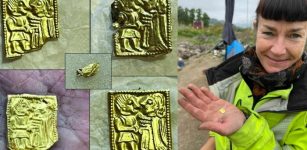 Mysterious Tiny 1,400-Year-Old Gold Foil Figures Found In Pagan Temple
Archaeology | Sep 23, 2023
Mysterious Tiny 1,400-Year-Old Gold Foil Figures Found In Pagan Temple
Archaeology | Sep 23, 2023



